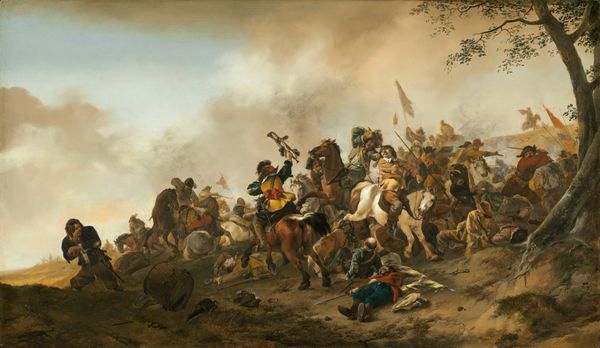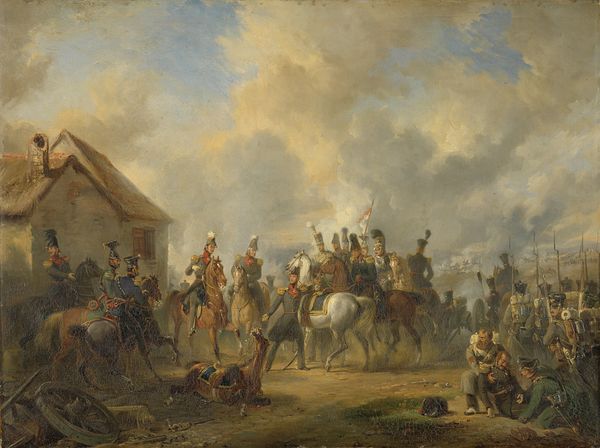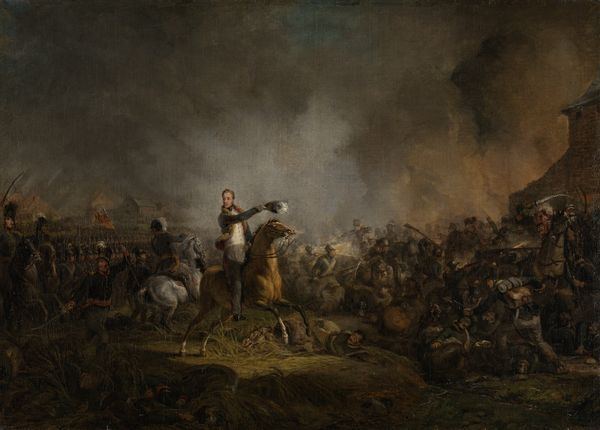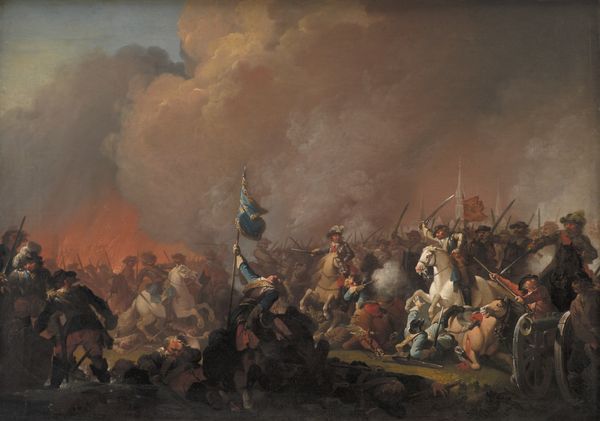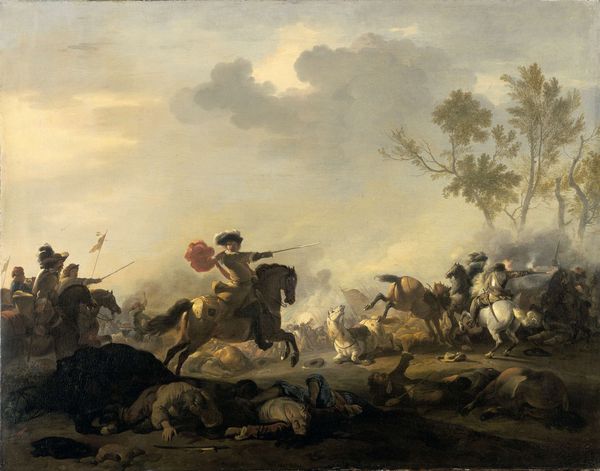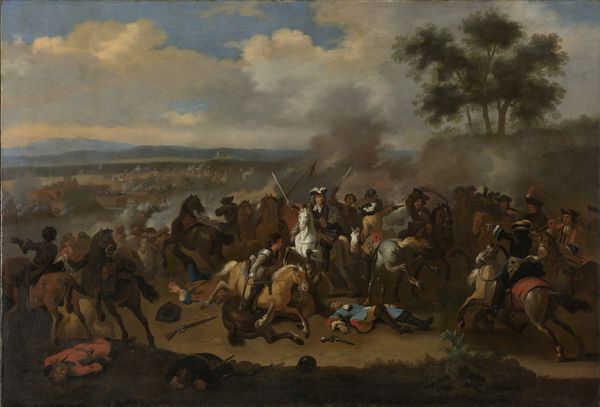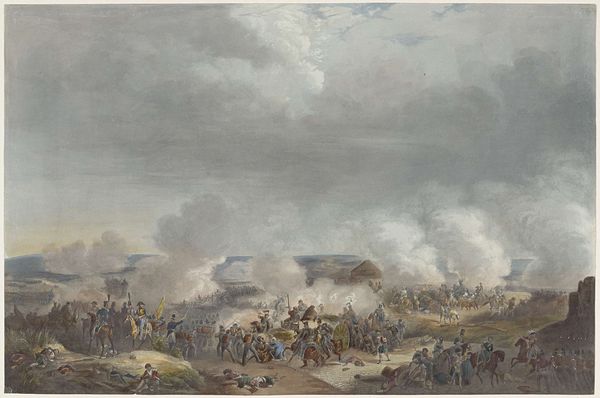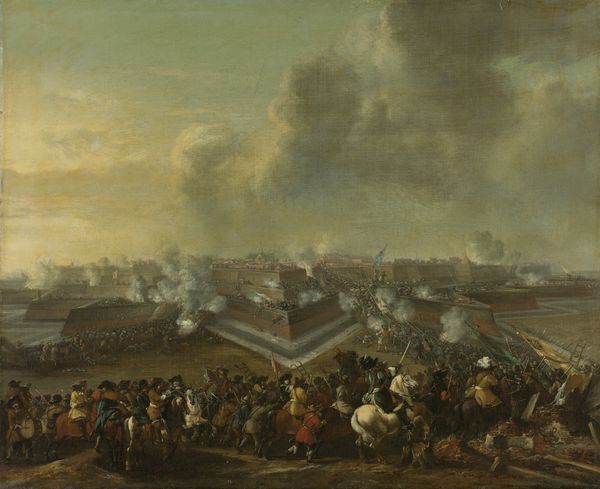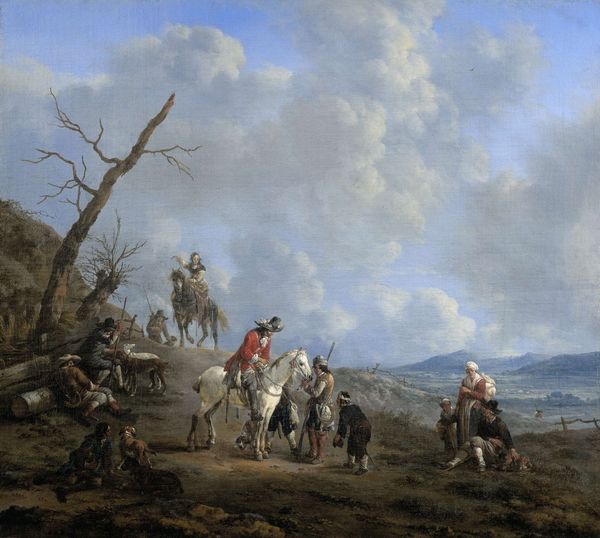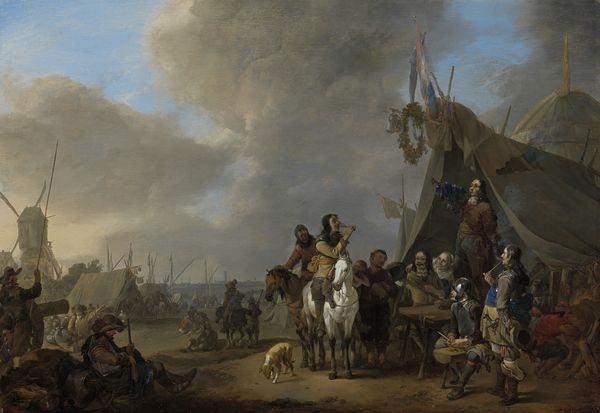
oil-paint
#
baroque
#
dutch-golden-age
#
oil-paint
#
landscape
#
oil painting
#
history-painting
Dimensions: 17 1/16 x 31 in. (43.34 x 78.74 cm) (sight)21 3/4 x 35 5/8 in. (55.25 x 90.49 cm) (outer frame)
Copyright: Public Domain
Editor: So, this is "A Battle Scene" by Anthonie Palamedesz., painted in 1632, using oil on canvas. There’s so much chaos depicted; it feels overwhelming to look at. What do you see in this piece beyond the obvious battle? Curator: Beyond the initial impression of chaos, I see a carefully constructed representation of power and its consequences during the Dutch Golden Age. These battle scenes were often commissioned, not necessarily to document a specific event, but to project an image of strength and dominance. Think about the context: The Netherlands was fighting for independence. What does this depiction of conflict tell us about the social attitudes toward war and national identity at the time? Editor: So, it's less about historical accuracy and more about promoting a particular idea? That's interesting. I guess I assumed that because it's a 17th-century painting, it’d be a factual record of something that occurred. Curator: Precisely. Consider how the artist chooses to portray the figures. Are they individual portraits, or are they types? Notice the use of light and shadow, how certain figures are highlighted while others remain obscured. And think about the symbolism of war itself. Who benefits? Who suffers? Editor: So, beyond just seeing a battle, we're meant to consider the impact of war on the people, and maybe even the propaganda value embedded within it. I didn’t think about it in terms of nation-building! Curator: Exactly! By viewing art as a cultural product deeply intertwined with the sociopolitical climate, we can unpack the values, beliefs, and power structures of the past. This wasn’t just painting war; it was selling an idea *of* war. Editor: I’ll definitely look at these historical paintings differently now, considering their wider social message. Curator: That's the goal, isn’t it? To encourage more in-depth and nuanced views on history through art.
Comments
minneapolisinstituteofart almost 2 years ago
⋮
Anthonie Palamedesz., called Palamedes Stevaerts, was a Delft painter best known for his military and “merry company” paintings. This battle scene dates from what is considered Stevaerts’ most original period of work, 1632-34. In the following decades, he favored the more static subjects of guardrooms and encampments.
Join the conversation
Join millions of artists and users on Artera today and experience the ultimate creative platform.
